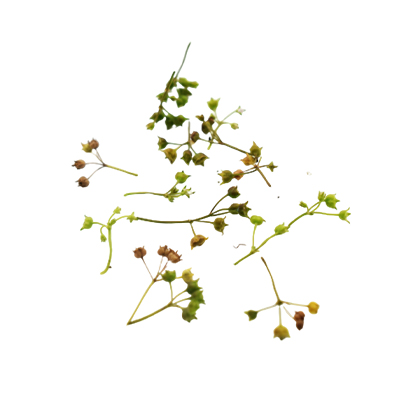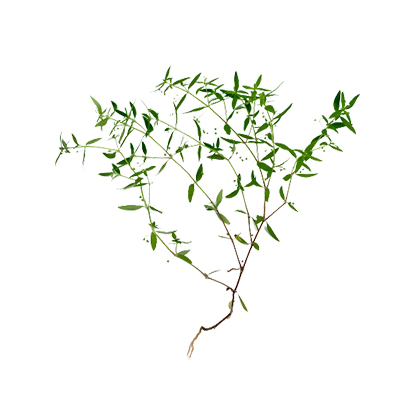Diamond Flower
Oldenlandia corymbosa L.
Rubiaceae
Location in our garden
Principal
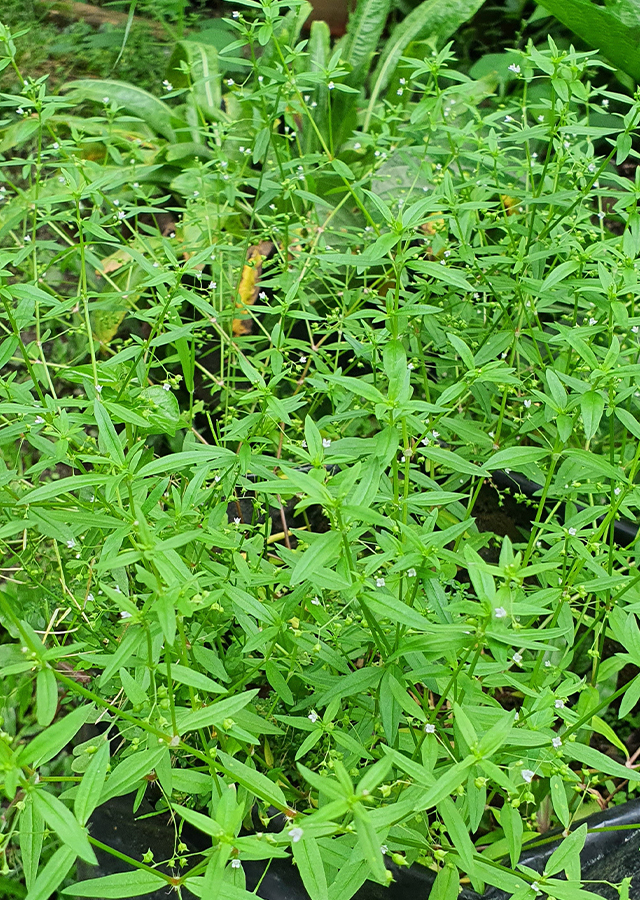
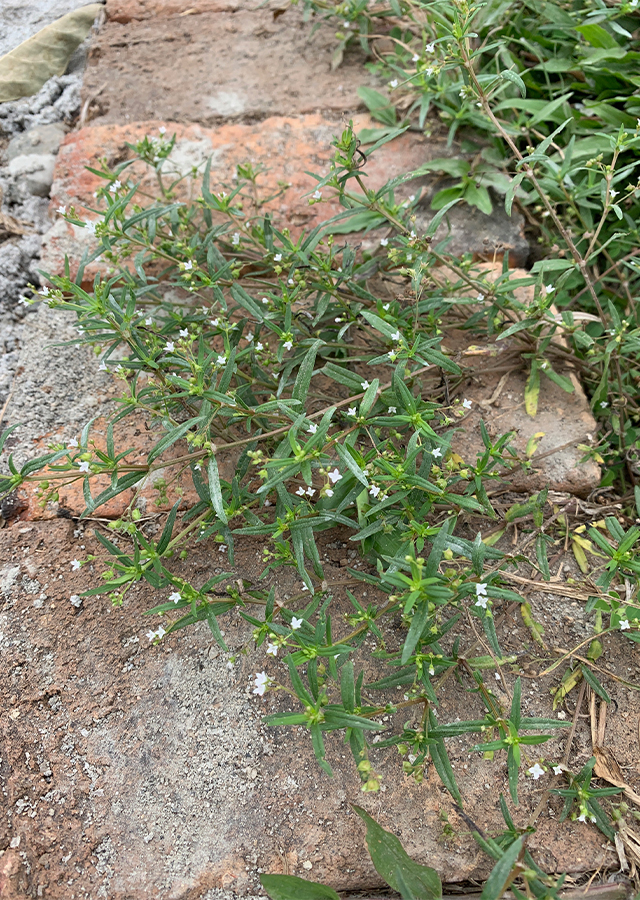
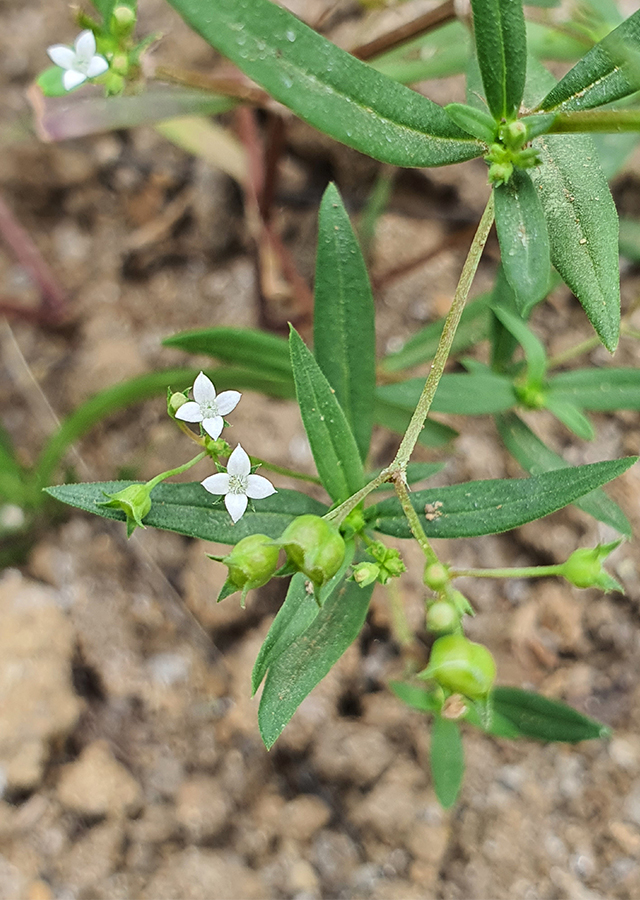
Synonym
Gerontogea corymbosa (L.) Cham. & Schltdl.
Hedyotis corymbosa (L.) Lam.
Habitus
Herbaceous. An erect, shrubs, sparsely branched annual plant with stems up to 40 cm long.
Part Used
Leaves
Flowers
Roots
Stem
Growing Requirements
Full Sunshine
Habitat
Coastal
Mountains
Rocky Areas
Shrublands
Grassland
Overview
The native distribution range of diamond flower remains uncertain. Previously, this species has been listed as native to the Old World, but recent phylogenetic studies suggest that it is circumscribed to Africa. Currently, it is considered native to Africa and introduced elsewhere. In India, it has been listed as both native and introduced. It can be found naturalized across tropical and subtropical Asia, America, the West Indies, Australia, and on many islands in the Pacific and Indian Ocean.
Vernacular Names
Malaulasiman (Philippines), Yaa linnguu (Thailand), Mille-grainers(French), San fang hua er cao (Chinese).
Agroecology
Grassland with long or short grass, bushland, montane scrub, shallow soil on rocks, sandy river ridges, furrows and dry ponds on black-cotton soil, weed in the field, road side, preferably in not to wet, cultivated and disturbed ground, at elevations from sea level to 2,300 m.
Morphology
- Stem - woody at the base, more or less angled, slender and glabrous without hairs or projections.
- Leaves - opposite, linear lanceolate, 1-3 cm long and 2-4 cm wide. They are sessile, acuteat the apex, entire at the margins, smooth, pale green beneath and dark green above.
- Flowers - white, 2 cm in diameter on pedicels up to 1 cm long.
- Fruit - round, many-seeded capsule with two carpels.
- Seeds - numerous, minute, round and brownish.
Cultivation
Propagated by seed. Seeds are dispersed by water and the soil working tools. The duration of the germination phase is variable and it occurs in late cycle, it is not influenced by cultural operations.
Chemical Constituents
Geniposide, 6 alpha-hydroxygeniposide, scandoside methyl ester, asperulosidic acid,deacetylasperuloside, asperuloside, 10-O-benzoylscandoside methyl ester, lyoniresinol-3 alpha-O-beta-glucopyranoside, and rutin.
Traditional Medicinal Uses
- A scrutiny of literature revealed some notable pharmacological activities of the plant such as hepatoprotective, cytotoxic anti-oxidant, oxytocic and anti malarial activity.
- Considered cooling, febrifuge, pectoral, digestive, diuretic, depurative, diaphoretic, stomachic, and vermifuge.
- The entire plant is used in decoction as an anthelmintic, antirheumatic, depurative, diaphoretic, digestive, diuretic, febrifuge, pectoral and stomachic.
- In Chinese folk medicine, the plant is used to treat skin sores, ulcers, sorethroat, bronchitis, gynecological infections and pelvic inflammatory diseases.
- In Indo-China, it is also used as antirheumatic.
- In India, it is a common ingredient in mixtures used internally to treat remittent fevers, gastric irritation, nervous depression and as a tonic.
Part Used
Reference Sources
- Aguilar, N.O. & Lemmens, R.H.M.J. (1999). Oldenlandia corymbosa L. In: de Padua, L.S. Bunyapraphatsara, N. and Lemmens, R.H.M.J. (Editor ): Plant Resources of South-East Asia No 12(1). Medicinal and poisonous plants 1. Backhuys Publishers, Leiden, the Netherlands. pp 367 - 367.



